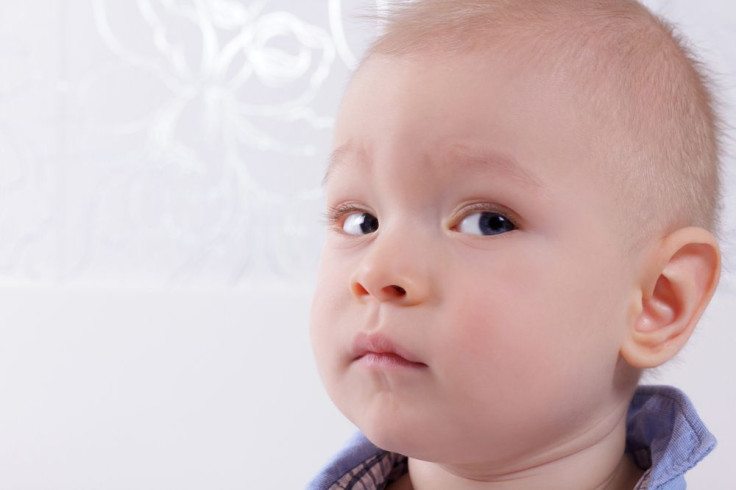Signs Of Autism May Include Frequent Eye Movement During Infancy, With Implications For Early Diagnosis

Among the many symptoms a child with autism experiences, sensory hypersensitivity is one of them. Sounds of normally mundane things, like a clock ticking or a faucet dripping, dominate the environment. The materials and surfaces of objects that are touched are more apparent, and sights are more vivid. All these stimuli bombard the brains of people with autism, albeit not altogether. And a new study now finds that analyzing kids’ eyes for excessive movement could be an early indicator of these autism symptoms.
The study, from scientists at the Medical Research Council in the UK, found that children with a higher familial risk of autism spectrum disorder (ASD) kept their eyes fixated on specific images for shorter durations than their lower risk counterparts. In other words, whereas children with a low risk of ASD moved their eyes about two times every second, those with a high risk moved them three times per second. Further differentiating the two groups, the study also found that kids with a higher risk tended to move their eyes frequently, and in consistent and repetitive patterns — typical eye movements are characterized by an initial “scanning” phase (with frequent movement), and then a slower phase in which information is processed.
The research may only show correlation between eye movement and ASD — in no way does eye movement guarantee a child will develop autism — but it can still serve as an early warning that autism may develop. “We are still at a very early stage in understanding what these results may mean,” lead author Dr. Sam Wass said in a press release. “Adults with ASD can sometimes process visual information more rapidly than other people, and perhaps that was happening for infants in our study.”
People with ASD, however, don’t always develop hypersensitivity — sometimes it’s the opposite, which is known as hyposensitivity. In these instances, a child may not respond to sensory stimuli like their name being called. When it comes to vision, “it could be that these babies need a higher level of stimulation, so they move their eyes more frequently to get more stimulation,” Wass said. “Or, it could be that when they look at something they are not engaging with it in the same way as other children tend to.”
The scientists reached these results after using eye-tracking technology to look at eye movements in about 100 infants (half with low familial risk and half with high risk) aged 6 to 10 months. While hooked to the eye tracker, the researchers showed the children five images — a face, mobile phone, bird, car, and a scrambled face — and looked at how engaged they became with the images. Thirty-six months later, they followed up with the kids to see who had met the criteria for an ASD diagnosis, and found those with more frequent eye movements at higher risk.
The findings are important because the earlier children are diagnosed with ASD, the earlier they can get treated. Studies, such as one from 2011, have shown early behavioral therapies cab improve language and cognitive ability as well as social communication skills, while reducing anxiety and aggression. Other studies have shown eye-tracking technology may help in diagnosing kids earlier, as most are diagnosed around 2 and 3 years old, when more obvious symptoms emerge.
“This research is adding to growing evidence about very early brain and behavioral differences that indicate whether an infant is at elevated risk for autism,” said Dr. Simon Wallace, research director at Autistica, which helped fund the study, in the press release. “Parents are often aware that their child is behaving differently from a young age but still wait too long to receive a diagnosis, and we hope that this research will ultimately lead to improved identification and diagnosis of autism.”
Source: Wass S, Jones E, Gliga T, et al. Shorter spontaneous fixation durations in infants with later emerging autism. Scientific Reports. 2015.
Published by Medicaldaily.com



























